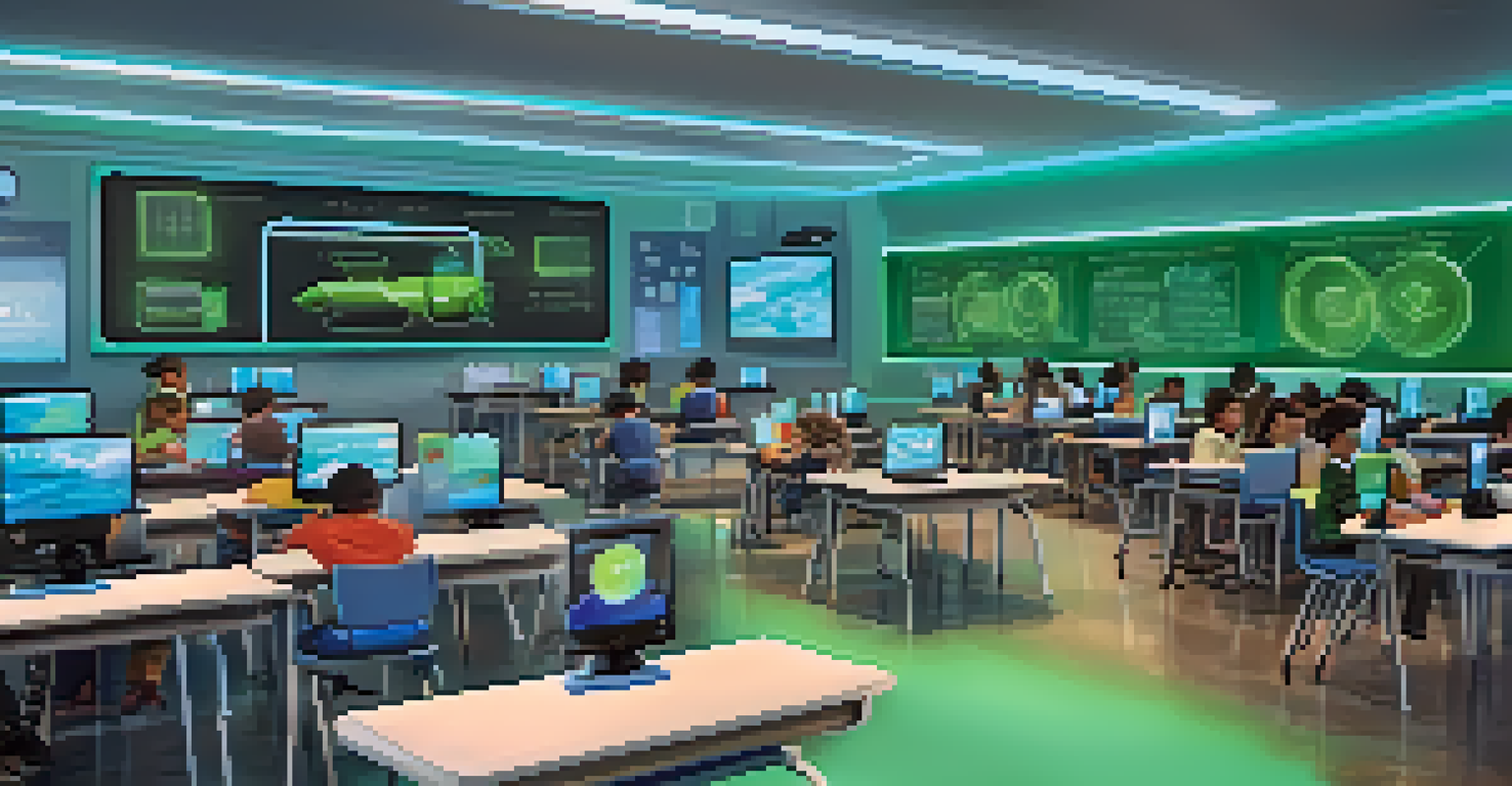The Impact of Standardized Testing on California Students

Understanding Standardized Testing in California Schools
Standardized testing has become a significant part of the educational landscape in California. These assessments, designed to measure student progress and school performance, have been a topic of debate among educators, parents, and policymakers. They are often viewed as a necessary tool for accountability, but their effectiveness can vary widely depending on numerous factors, including socio-economic status and educational resources.
Standardized tests are designed to measure student knowledge and understanding, but they often fall short in reflecting the true abilities of diverse learners.
In California, tests such as the Smarter Balanced Assessment are used to evaluate students' skills in math and English language arts. These tests aim to provide a uniform measure of student achievement across diverse school districts. However, the pressure to perform well on these tests can lead to a narrow focus on test preparation, often at the expense of a broader educational experience.
Ultimately, understanding the role of standardized testing is essential to grasping its impact on California students. While it can provide valuable data, the implications for teaching and learning extend far beyond the test results themselves.
The Pressure of Testing: Stress and Anxiety on Students
For many students in California, the pressure to excel in standardized testing can lead to significant stress and anxiety. This pressure often stems from high expectations set by parents, teachers, and the school system. As students prepare for these tests, they may feel overwhelmed, which can negatively affect their overall well-being and academic performance.

Research has shown that excessive stress can hinder a student's ability to perform well on tests. This creates a frustrating cycle where anxiety leads to poor performance, which in turn increases stress levels. Some students may even develop a fear of failure, turning the testing experience into a source of dread rather than a showcase of their knowledge.
Equity Gaps in Testing Outcomes
Disparities in access to resources can hinder the performance of marginalized students on standardized tests.
Addressing the emotional toll of standardized testing is crucial for fostering a healthier educational environment. Schools that emphasize mental health and provide resources for managing stress can help mitigate these negative effects.
Equity and Access: Disparities in Testing Outcomes
One of the most critical issues surrounding standardized testing in California is equity. Not all students have equal access to resources that can help them succeed. Factors such as socio-economic status, language barriers, and varying educational opportunities can create significant disparities in test outcomes among different student populations.
Education is not preparation for life; education is life itself.
For instance, students from low-income families may not have the same access to tutoring or test preparation resources as their more affluent peers. This can lead to a cycle of disadvantage, where students who need extra support the most are left behind. As a result, standardized tests may not accurately reflect the true abilities of all students, particularly those from marginalized communities.
Addressing these disparities requires a concerted effort from educators and policymakers to ensure that all students have the support they need to succeed. By focusing on equity, we can work towards a more just educational system.
The Teaching to the Test Phenomenon
Standardized testing can inadvertently lead to a phenomenon known as 'teaching to the test.' This occurs when educators prioritize test content over a well-rounded curriculum, focusing primarily on subjects and skills that will be assessed. While this approach can lead to improved test scores, it may also limit students' exposure to a more diverse range of knowledge and critical thinking skills.
In California, some teachers feel pressured to streamline their lesson plans to ensure that students are adequately prepared for standardized tests. This can diminish the richness of classroom discussions and exploration of topics that may not be directly tested. Consequently, students might miss out on valuable learning experiences that foster creativity and curiosity.
Stress from Standardized Testing
The pressure to excel in standardized testing can lead to significant stress and anxiety among students.
Finding a balance between preparing students for standardized tests and providing a holistic education is essential. Schools should strive to create an engaging learning environment that encourages exploration while also preparing students for assessments.
The Role of Parents in Standardized Testing
Parents play a crucial role in shaping their children's attitudes towards standardized testing. Their support and understanding can significantly impact how students approach these assessments. When parents emphasize the importance of learning and growth over mere test scores, children are more likely to develop a positive mindset towards their education.
Encouraging open discussions about testing can help alleviate some of the anxiety students face. Parents can share their own experiences and reassure their kids that tests are just one measure of their abilities. Moreover, helping students establish effective study habits and stress-management techniques can empower them to tackle testing challenges more confidently.
Ultimately, a supportive home environment can make a world of difference in how students perceive and prepare for standardized tests, leading to better outcomes for everyone involved.
Alternatives to Standardized Testing: A New Approach
With growing concerns about the limitations of standardized testing, many educators and researchers advocate for alternative assessment methods. These alternatives can include project-based assessments, portfolios, and performance tasks that allow students to demonstrate their knowledge in diverse ways. Such assessments can provide a more comprehensive view of a student's abilities and learning progress.
In California, some schools are already experimenting with these alternative approaches, seeking to evaluate students through practical applications of their knowledge. These methods can foster deeper understanding and critical thinking skills, preparing students for real-world situations rather than just test scenarios.
Exploring Alternative Assessments
Alternative assessment methods, such as project-based evaluations, may provide a more comprehensive view of student abilities.
Embracing alternative assessments can help shift the focus from merely passing tests to truly mastering content. By prioritizing meaningful learning experiences, schools can cultivate a generation of students who are not only test-ready but also equipped for future challenges.
The Future of Standardized Testing in California
As discussions about the effectiveness of standardized testing evolve, the future of these assessments in California remains uncertain. Education leaders are increasingly questioning whether traditional testing methods genuinely reflect student learning and achievement. Some are calling for a re-evaluation of how student success is measured in the state.
With the rise of technology and innovative teaching methods, there is potential for more dynamic assessment strategies that adapt to students' individual learning styles. Moving away from a one-size-fits-all approach could lead to a more equitable educational landscape, where all students have the opportunity to thrive.

Ultimately, the future of standardized testing in California will depend on a collective commitment to improving the education system. By prioritizing student well-being and equitable access to resources, we can create an environment where all learners can succeed.